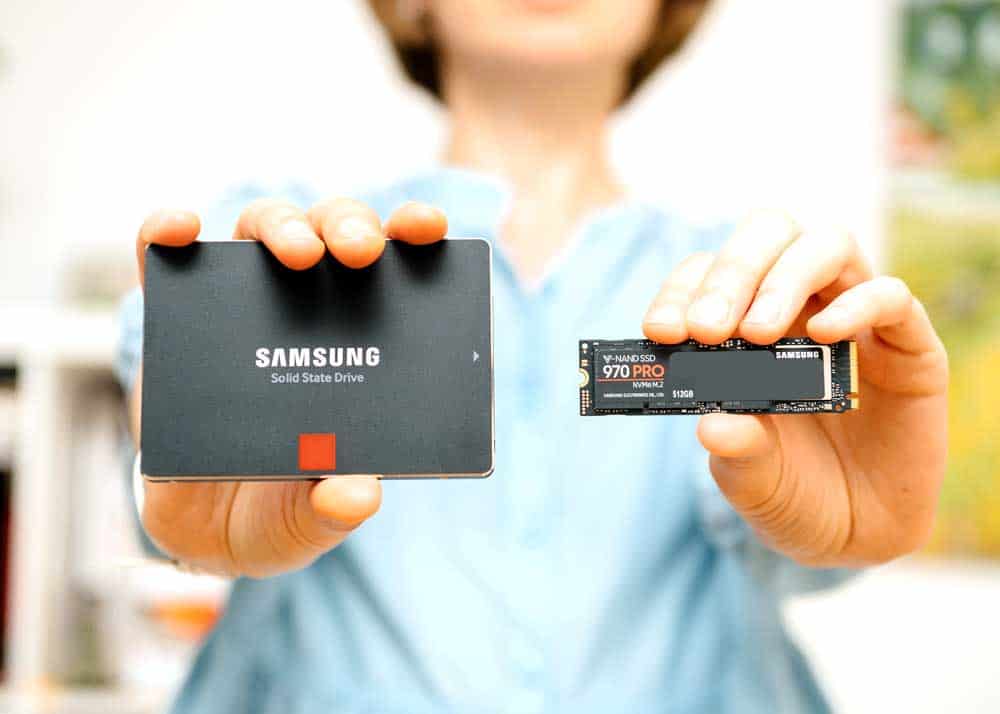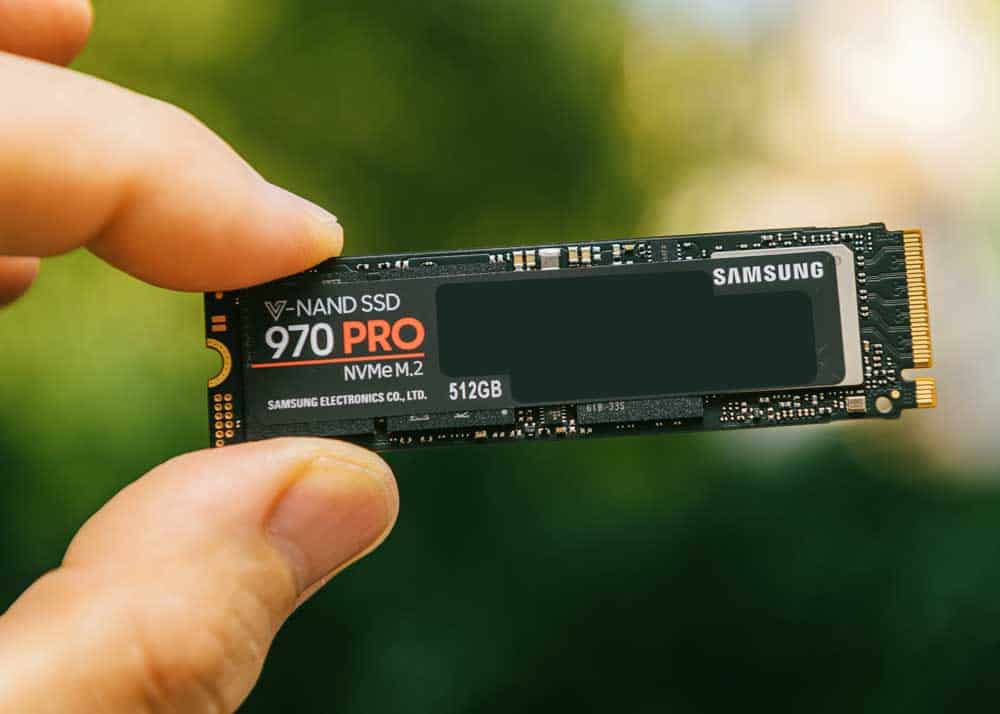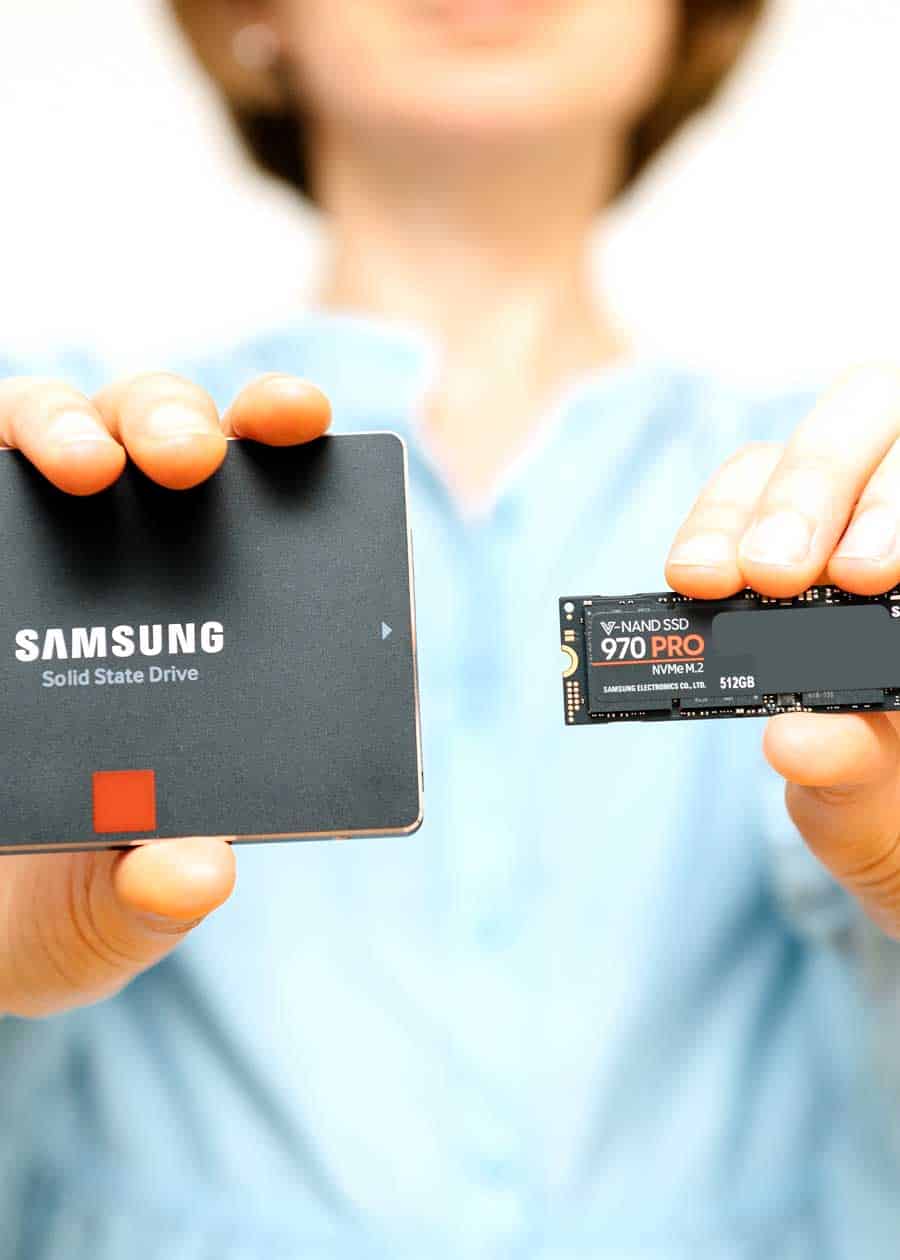Ever notice that gigabytes aren’t measured the same? Why does my 1TB hard drive only store 931GB of storage space? Here’s the rundown on these parallel numbering systems: binary vs decimal. The set of charts, videos, and conversion data will quickly simplify this complex question.
Binary and decimal numbering are two distinct numeration systems. Binary is base-2 (using 2 digits) and is primarily used by software and data storage. Decimal is base-10 (using 10 digits) and is primarily used by people. They can be easily converted to determine the storage capacity of disk drives.
- Binary System: Consists of digits 0 and 1. (Base 2)
- Decimal System: Consists of digits 0 through 9. (Base 10)

Learn more about what GB means in photography.
Binary Numeral System Overview
Here are 5 things to know about binary numeration.
- Binary System: (2 digits) Consists of digits “0” (zero) and “1” (one). This is known as Base 2.
- Binary origin: From the Latin binarius, meaning “two together.”
- Used by: Computers and computer software.
- Digits in the binary numeral system are known as bits (binary digits).
- Binary numbers can be converted to decimal, hexadecimal, and octal numeral systems.
Common Capacity Values in Binary
While similar to the decimal capacity value, notice that the third and fourth letters are “bi”.
- Kibibyte: 1024 bytes (Binary system)
- Mebibyte: 1024 kilobytes (Binary system)
- Gibibyte: 1024 megabytes (Binary system)
- Tebibyte: 1024 gigabytes (Binary system)
Decimal Numeral System Overview
Here are 4 things to know about the decimal numeral system.
- Decimal System: (10 digits) Consists of digits “0” (zero) through “9” (nine). This is known as base-ten and denary.
- Decimal origin: From the Latin decimus, meaning “tenth.”
- Used by: Humans, including storage drive manufacturers
- Digits in the decimal numeral system are known as decimal numerals and decimals.
Common Capacity Values in Decimal
- Kilobyte: 1000 bytes (Decimal system)
- Megabyte: 1000 kilobytes (Decimal system)
- Gigabyte: 1000 megabytes (Decimal system)
- Terabyte: 1000 gigabytes (Decimal system)

Binary vs Decimal Files Sizes Compared (Chart)
Here’s how binary and decimal file sizes relate to each other.
| File Type | Megabyte (MB) | Gigabyte (GB) | Terabyte (TB) |
|---|---|---|---|
| Bits (in Decimal) | 8,000,000 bits | 8,000,000,000 bits | 8,000,000,000,000 bits |
| Bits (in Binary) | 8,388,608 bits | 8,589,934,592 bits | 8,796,093,022,208 bits |
| Bytes (in Decimal) | 1,000,000 bytes | 1,000,000,000 bytes | 1,000,000,000,000 bytes |
| Bytes (in Binary) | 1,048,576 bytes | 1,073,741,824 bytes | 1,099,511,627,776 bytes |
| Kilobytes (in Decimal) | 1000 KB | 1,000,000 KB | 1,000,000,000 KB |
| Kilobytes (in Binary) | 1024 KB | 1,048,576 KB | 8,589,934,592 KB |
| Megabytes (in Decimal) | 1 | 1000 MB | 1,000,000 MB |
| Megabytes (in Binary) | 1 | 1024 MB | 1,048,576 MB |
As you probably noticed, I used the GB and TB designations for both binary and decimal numbers. This isn’t technically correct, because binary file capacity should be rendered as GiB and TiB, respectively.
And while GiB isn’t equivalent to GB, Windows OS displays them interchangeably. On the other hand, macOS correctly renders GB as a GB, not equating GiB with GB.
Binary vs Decimal Numbers: 1-20 (Chart)
Here’s how binary and decimal numbers relate to each other.
| System | Binary | Decimal |
|---|---|---|
| Zero | ||
| One | 1 | 1 |
| Two | 10 | 2 |
| Three | 11 | 3 |
| Four | 100 | 4 |
| Five | 101 | 5 |
| Six | 110 | 6 |
| Seven | 111 | 7 |
| Eight | 1000 | 8 |
| Nine | 1001 | 9 |
| Ten | 1010 | 10 |
| Eleven | 1011 | 11 |
| Twelve | 1100 | 12 |
| Thirteen | 1101 | 13 |
| Fourteen | 1110 | 14 |
| Fifteen | 1111 | 15 |
| Sixteen | 10000 | 16 |
| Seventeen | 10001 | 17 |
| Eighteen | 10010 | 18 |
| Nineteen | 10011 | 19 |
| Twenty | 10100 | 20 |
Binary to Decimal Conversion (2 Methods) Video
There are two methods to convert binary to the decimal numeral system.
- Doubling Method: Multiplying by 2 to convert binary to decimal.
- Positional Notation Method: Weight is assigned by the position of each digit.
Here’s a video tutorial to convert binary to decimal.
Here’s a great calculator that’ll do the work for you. Kyle’s Converter will convert to/from all file sizes, in both decimal and binary numeral systems.
Decimal to Binary Conversion: Video
Here’s a simple guide to converting decimal numerals to binary.
Curious how these different multiple-byte units related across decimal and binary numeral systems?
Here’s the breakdown of megabyte, gigabyte/gibibyte, and terabyte/tebibyte units.
1. Terabyte Size: Decimal vs Binary
Here’s how a terabyte (decimal) compares to a tebibyte (binary).
Base 10: TB Size and Definition (Decimal)
- 1 TB = 1 000 000 000 000 bytes (= 10004 B = 1012 B)
- 1 TB = 1 000 GB
- 1 TB = 1 000 000 MB
- 1 TB = 1 000 000 000 KB
Base 2: TiB Size and Definition (Binary)
- 1 TiB = 1 099 511 627 776 bytes (= 10244 B = 240 B)
- 1 TiB = 1 024GB
- 1 TiB = 1 048 576 MB
- 1 TiB = 1 073 741 824 KB
What is TiB?
TiB is a measure of computing capacity, in binary format. TiB is an acronym for tebibyte.
TiB is often confused with TB (terabyte), but these are not equal.
2. Gigabyte Size: Decimal vs Binary
Here’s how a gigabyte (decimal) compares to a gibibyte (binary).
Base 10: GB Size and Definition (Decimal)
- 1 GB = 1 000 000 000 bytes (= 10003 B = 109 B)
- 1 GB = 1 000 MB
- 1 GB = 1 000 000 KB
Base 2: GiB Size and Definition (Binary)
- 1 GiB = 1 073 741 824 bytes (= 10243 B = 230 B)
- 1 GB = 1 024 MB
- 1 GB = 1 048 576 KB
What is GiB?
GiB is a measure of computing capacity, in binary format. GiB is an acronym for gibibyte.
GiB is often confused with GB (gigabyte), but these are not equal.
3. Megabyte Size: Decimal vs Binary
Here’s how a megabyte (decimal) compares to a megabyte (binary).
Base 10: MB Size and Definition (Decimal)
- 1 MB = 1 000 000 bytes (= 10002 B = 106 B)
- 1 MB = 1 000 KB
Base 2: MB Size and Definition (Binary)
- 1 MB = 1 048 576 bytes (= 10242 B = 220 B)
- 1 MB = 1 024 KB
More reading: Here’s how many photos and videos can be stored per GB.
Why are 1TB hard drives not 1TB?
Computers count according to binary numeration while we count using the decimal numbering system.
That means that one kilobyte which is 1000 bytes to us, is actually 1024 bytes to a computer.
When we say “1 terabyte”, we mean one trillion bytes (or one thousand gigabytes).
The binary difference compounds with a larger capacity.
- Kilobyte: 1024 bytes (Binary system)
- Megabyte: 1024 kilobytes (Binary system)
- Gigabyte: 1024 megabytes (Binary system)
- Terabyte: 1024 gigabytes (Binary system)
When you purchase a 1TB SSD, it contains 1,000,000,000,000 (one trillion bytes) but your operating systems don’t display it that way.
Your 1TB SSD will show 931GB (999,476,797,440 bytes) when installed in your Windows computer.

How My Harddrives Measure Up
My desktop computer has the following specs (see image above).
- SSD Hard drive: 1TB (930GB)
- HDD Hard drive: 4TB (3.63TB)
- HDD Hard drive: 8TB (7.27TB)
I use the SSD hard drive for programs and the operating system. The two HDD drives are for data.

Keep reading: How Many KB in a GB? Guide to All File Sizes
Your turn
Have you made some sense our the dueling binary and decimal numeral systems? Have a question or maybe something to add? Let me know in the comments!
- About the Author
- Latest Posts
Hey, I’m Bryan! I’m a content creator and co-founder of Storyteller Tech.
Experienced GoPro Videographer: I’ve been shooting with GoPro cameras for over 11 years. My first GoPro was the Hero3 Silver, bought for a Galapagos work trip in 2012. Today I own 20+ action cameras, including GoPro, DJI, and Insta360 cameras.
Professional Creator: Dena and I have developed video and content marketing plans for numerous international travel brands. And we also run several content businesses.
Bryan also creates at Storyteller.Travel and is co-founder of Storyteller Media, a Canadian-based publishing company.
